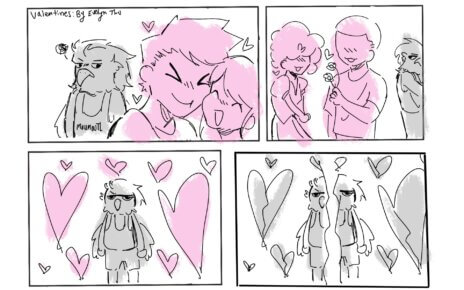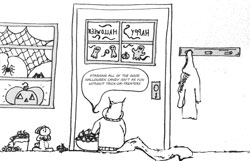Following the events of September 11, there have been movies (World Trade Center) and TV specials discussing the tragedy of this day as well as the heroism of police, firefighters, and first responders who braved the danger to help anyone they could.
However, what people might not know is that the comic book community also developed graphic novels and comics in which writers and artists created stories centering around this day to honor those lost and reminding people to never forget.
Just like the noble intentions of its heroes, many of the proceeds from these books were donated to organizations such as the World Trade Center Relief Fund, Survivors Fund, Twin Tower Fund, and the American Red Cross.
One of the bigger collaborations resulted in a two volume graphic novel series known as “9-11: September 11.”
The first volume was called “9-11: September 11 (Artists Respond)” and published by independent publisher Chaos!, Dark Horse, and Image Comics.
According to the solicitation on Amazon.com, “Among Volume One’s contributors are writer/artist William Stout, who shares the true story of a Yugoslavian citizen’s love of Americans; Stan Sakai, vividly recalling his last visit to New York City; and Paul Chadwick, who offers his interpretation of the heroism of the passengers on Flight 93, whose sacrifice kept September 11 from being an even more tragic day…”
Some other writers and artists telling their stories were Will Eisner, Frank Miller, Dave Gibbons, Eric Powell, and Tony Millionaire.
The second volume, “9-11: September 11 (The World’s Finest Comic Book Writers & Artists Tell Stories to Remember,” was published through DC Comics.
This volume is notable for an Alex Ross cover showing Superman and his pet, Krypto, looking in awe at a mural of police, firefighters, and paramedics. It continued the tone from the first one and included more stories from writers and artists such as Neil Gaiman, Stan Lee, Jim Lee, Neal Adams, and Ed Brubaker.
Over at Marvel, they also published their own line of benefit graphic novels such as “Heroes: The World’s Greatest Super Hero Creators Honor The World’s Greatest Heroes” and “A Moment of Silence.”
“Heroes” focused on those who risked their lives to save others on this day and included stories from a slew of writers and artists such as Kurt Busiek, Stan Lee, Sam Keith, and Tim Bradstreet, while Ross supplied a cover of a firefighter holding a lifeless body next to rubble.
“A Moment of Silence” involved writers like Brian Michael Bendis, Kevin Smith, and artists like Mark Bagely. It told four stories, all of which were devoid of dialogue.
According to Time, “Three of the four are true-life stories, like the one about Tony Savas, a building inspector stationed at the World Trade Center who receives a touching tribute as he marches, blueprints in hand, into the doomed building.”
However, among the 9/11 books from Marvel, one that stands out is “Amazing Spider-Man” Vol. Two #36 also referred to as “the Black Issue” for having a cover absent of anything but the title and credits.
Written by J. Michael Stracaynski and drawn by John Romita, Jr., the issue dealt with Spider-Man’s reaction to the destruction of the World Trade Center and how he and other heroes (and villains) tried to help each other the best they could.
In a 2001 Comic Book Resources article, Romita discussed his feelings and the approach he took toward this emotional story in the life of Peter Parker/Spider-Man.
He said, “‘[This issue] caused me to lose a lot of sleep for the month that I drew it…It gave me a lot of nightmares. With the news and radio, you can just put it off or down. But with this work, I had reference material plastered all over my office. I had to be exact, down to the patterns of rubble. I wanted it to be perfect.’”
Outside of the major publishers, Alternative Comics also produced its own collection of 9/11 stories drawn again by a large collection of writers and artists such as Michael Avon Oeming, Jeff Smith, Frank Cho, and Eisner.
Meanwhile, Joseph Michael Linser created his own story in the benefit comic, “New York I Love You,” which featured a cover of his character Dawn looking away from the Twin Towers in tears.
However, one graphic novel stands out among the many for being a detailed, illustrated version of the 9/11 Commission Report. Writer Sid Jacobson and artist Ernie Colón presented this bold approach in “The 9/11 Report: A Graphic Adaptation.”
According to a review on Amazon.com, “Jacobson’s text frequently follows word for word the original report, faithfully captures its investigative thoroughness, and covers its entire scope, even including the Commission’s final report card. Colón’s stunning artwork powerfully conveys the facts, insights, and urgency of the original.”
September. 11 left a hole in America’s spirit that has been slowly healing since that day.
However, the ability to create art allows everyone to channel their emotions onto the page and express what they are thinking about and feeling on the inside.



